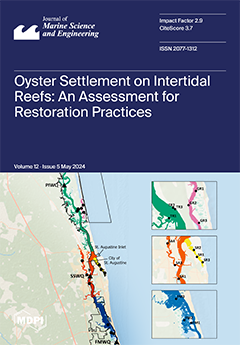Commonly found in tropic and subtropic seagrass beds, lucinid clams host sulfur-oxidizing bacteria within their gills. These symbionts are crucial in converting phytotoxic sulfide in the sediment into less harmful sulfate, thus enhancing the environment for seagrasses and associated biota. We recently uncovered
[...] Read more.
Commonly found in tropic and subtropic seagrass beds, lucinid clams host sulfur-oxidizing bacteria within their gills. These symbionts are crucial in converting phytotoxic sulfide in the sediment into less harmful sulfate, thus enhancing the environment for seagrasses and associated biota. We recently uncovered small clams within a
Zostera marina seagrass bed situated in a lagoon on Jeju Island, off the south coast of Korea. These bivalves, with shell lengths of up to 7 mm, exhibited distinct features, including thick and hypertrophied gills, inflated and ovoid shells with a shell height/shell length ratio of 0.99, and the absence of a sulcus on the external shell surface. These characteristics align closely with those of
Pillucina pisidium, a lucinid clam species originally reported in Japan. Analysis of the cytochrome b gene partial sequences of the clams from Jeju Island revealed a 100% match with
P.
pisidium reported in Japan, confirming their identity. Moreover, we successfully assembled the complete mitochondrial genome of
P.
pisidium for the first time, revealing a circular genome spanning 21,059 bp. Additionally, we constructed a phylogenetic tree using 13 protein-coding genes (PCGs) extracted from the mitochondrial genome of
P.
pisidium. Notably,
P.
pisidium formed a distinct clade within the subclass Autobranchia alongside other lucinid clams in the phylogenetic tree. However, within the family Lucinidae, synteny analysis of the 13 PCGs revealed diverse gene arrangement patterns, indicating considerable divergence. This divergence underscores the need for an extensive examination of Lucinidae mitochondrial genomes to elucidate the phylogenetic ties more precisely within the family, highlighting
P.
pisidium’s distinct evolutionary path within the family Lucinidae.
Full article





